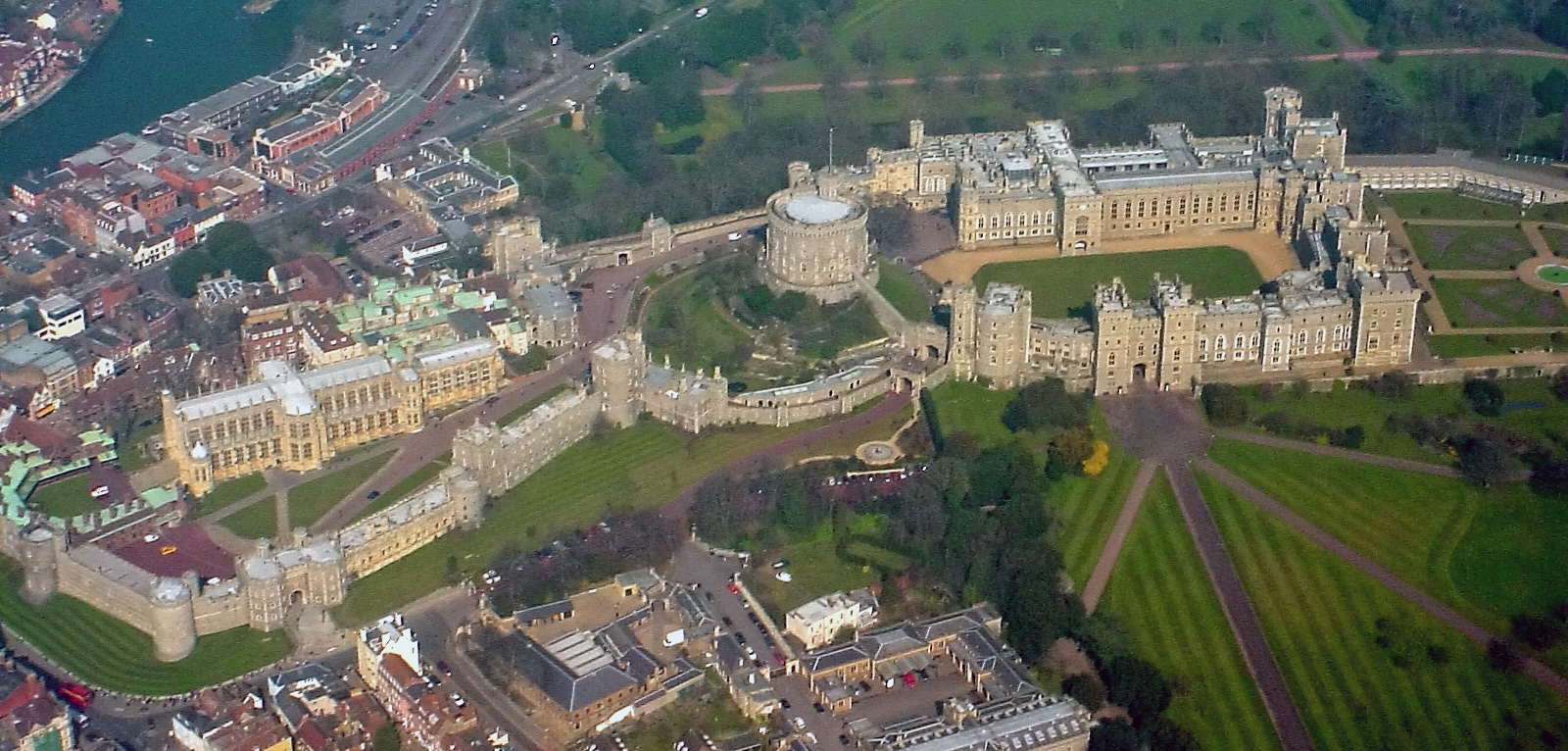Shell keep on:
[Wikipedia]
[Google]
[Amazon]
 A shell keep is a style of
A shell keep is a style of
File:Windsor Castle Round Tower.JPG, The shell keep of Windsor Castle was built by Henry II and remodelled in the 19th century.
File:RestormelCastle.JPG,
 A shell keep is a style of
A shell keep is a style of medieval
In the history of Europe, the Middle Ages or medieval period lasted approximately from the late 5th to the late 15th centuries, similar to the post-classical period of global history. It began with the fall of the Western Roman Empire a ...
fortification
A fortification is a military construction or building designed for the defense of territories in warfare, and is also used to establish rule in a region during peacetime. The term is derived from Latin ''fortis'' ("strong") and ''facere ...
, best described as a stone structure circling the top of a motte.
In English castle
A castle is a type of fortified structure built during the Middle Ages predominantly by the nobility or royalty and by military orders. Scholars debate the scope of the word ''castle'', but usually consider it to be the private fortified r ...
morphology, shell keep
A keep (from the Middle English ''kype'') is a type of fortified tower built within castles during the Middle Ages by European nobility. Scholars have debated the scope of the word ''keep'', but usually consider it to refer to large towers in c ...
s are perceived as the successors to motte-and-bailey
A motte-and-bailey castle is a European fortification with a wooden or stone keep situated on a raised area of ground called a motte, accompanied by a walled courtyard, or bailey, surrounded by a protective ditch and palisade. Relatively easy t ...
castles, with the wooden fence around the top of the motte replaced by a stone wall. Castle engineers during the Norman period did not trust the motte to support the enormous weight of a stone keep. A common solution was to replace the palisade
A palisade, sometimes called a stakewall or a paling, is typically a fence or defensive wall made from iron or wooden stakes, or tree trunks, and used as a defensive structure or enclosure. Palisades can form a stockade.
Etymology
''Palisade ...
with a stone wall then build wooden buildings backing onto the inside of the wall. This construction was lighter than a keep and prevented the walls from being undermined, meaning they could be thinner and lighter.
A gazetteer compiled by archaeologist Robert Higham counted 21 shell keeps in England and Wales. Examples include the Round Tower at Windsor Castle
Windsor Castle is a royal residence at Windsor in the English county of Berkshire. It is strongly associated with the English and succeeding British royal family, and embodies almost a millennium of architectural history.
The original c ...
and the majority were built in the 11th and 12th centuries.
Surviving English examples of shell keeps include:
* Arundel, West Sussex (re-modelled post-medieval)
* Berkhampstead, Hertfordshire
* Carisbrooke, Isle of Wight
* Castle Acre, Norfolk (shell keep around an inner tower or manor House)
* Clare, Suffolk (part of wall on motte only)
* Fotheringhay, Northamptonshire (demolished - motte only survives)
* Launceston, Cornwall
* Lewes, East Sussex, - two shell keeps on same site? One survives
* Lincoln, Lincolnshire - two shell keeps on same site? One survives
* Oxford, Oxfordshire
* Pickering, North Yorkshire
* Restormel, Cornwall (excellent example)
* Tamworth, Staffordshire
* Tonbridge, Kent (foundations on motte only)
* Totnes, Devon
* Trematon, Cornwall
* Warwick, shell demolished and incorporated into bailey wall post-medieval
* Wigmore, Herefordshire
* Windsor, Berkshire (re-modelled post-medieval)
* Wiston (Wales)
In addition Farnham and Berkeley castles have stone enclosed mottes which may be interpreted as shell keep variations. At other sites such as Durham, Warkworth, Clifford's Tower (York) and Sandal (Wakefield), shell keeps may have evolved into a tower proper. Clifford's Tower is often interpreted by modern visitors as a shell keep due to explosion damage, in 1684, which removed the roof and its central supporting masonry. True shell keeps were a stone wall around the upper perimeter of the motte with lean-to buildings against this outer wall and a small courtyard in the middle. See Restormel plan below.
Unusually Lewes and Lincoln castles both feature two separate mottes which may have had shell keeps upon both of them. The reason for this is unclear but given that Lincoln Castle is adjacent to the cathedral, one shell keep may have been for the castellan (castle holder) and the other for the bishop. In each case, only one shell keep survives.
Restormel Castle
Restormel Castle ( kw, Kastel Rostorrmel) lies by the River Fowey near Lostwithiel in Cornwall, England, UK. It is one of the four chief Norman castles of Cornwall, the others being Launceston, Tintagel and Trematon. The castle is notable for ...
built around the motte
File:Restormel Castle keep plan - labelled.png, Plan of Restormel Castle
File:Tamworth Castle - geograph.org.uk - 343714.jpg, Tamworth Castle, Staffordshire
File:Totnes Castle 20181026-02.jpg, Totnes Castle
Totnes Castle is one of the best preserved examples of a Norman motte and bailey castle in England. It is situated in the town of Totnes on the River Dart in Devon. The surviving stone keep and curtain wall date from around the 14th century. F ...
, Devon
File:Wiston Castle (4077887299).jpg, Wiston Castle, Pembrokeshire
Notes
References
* * * * Castle architecture {{Fortifications